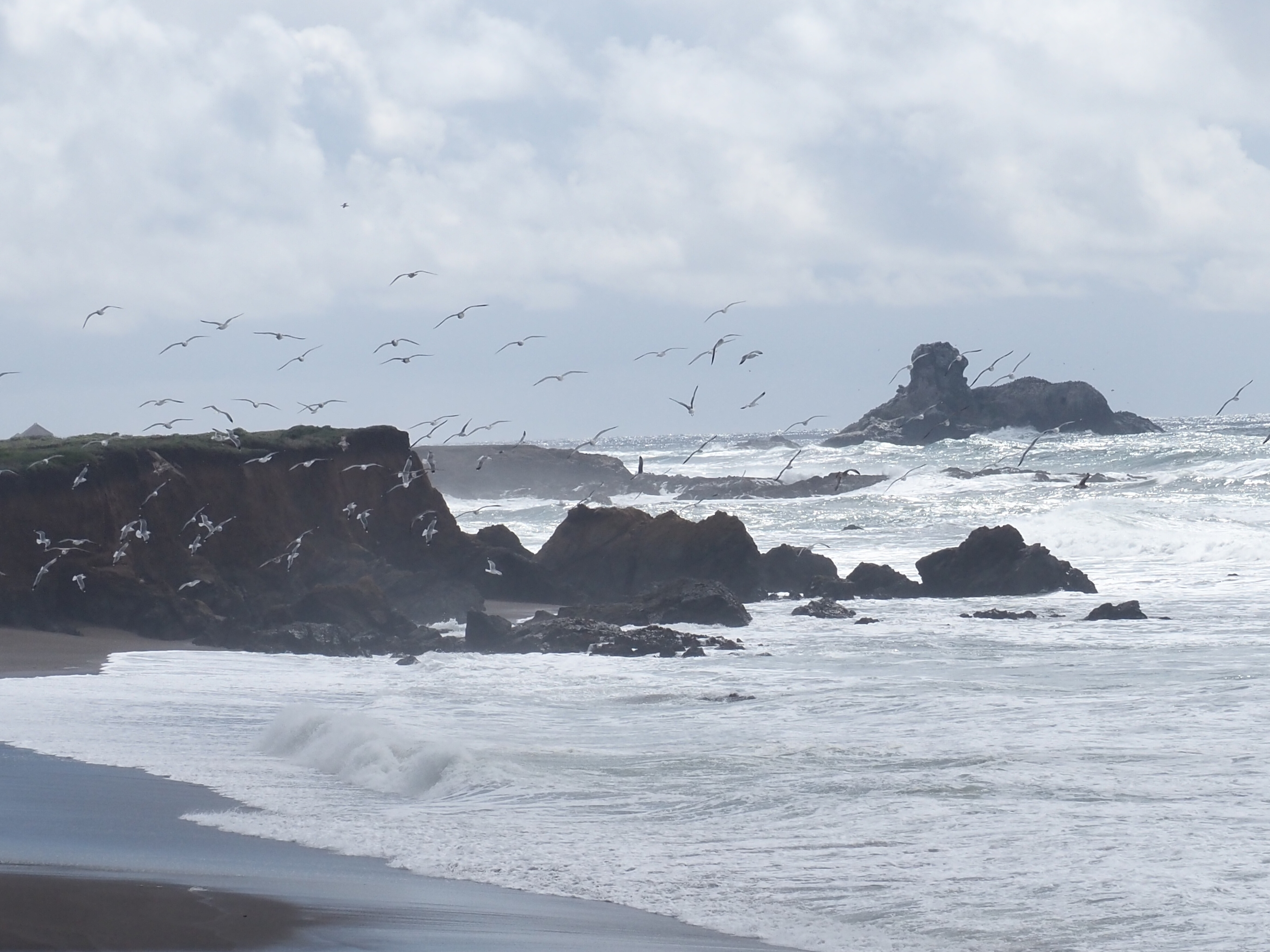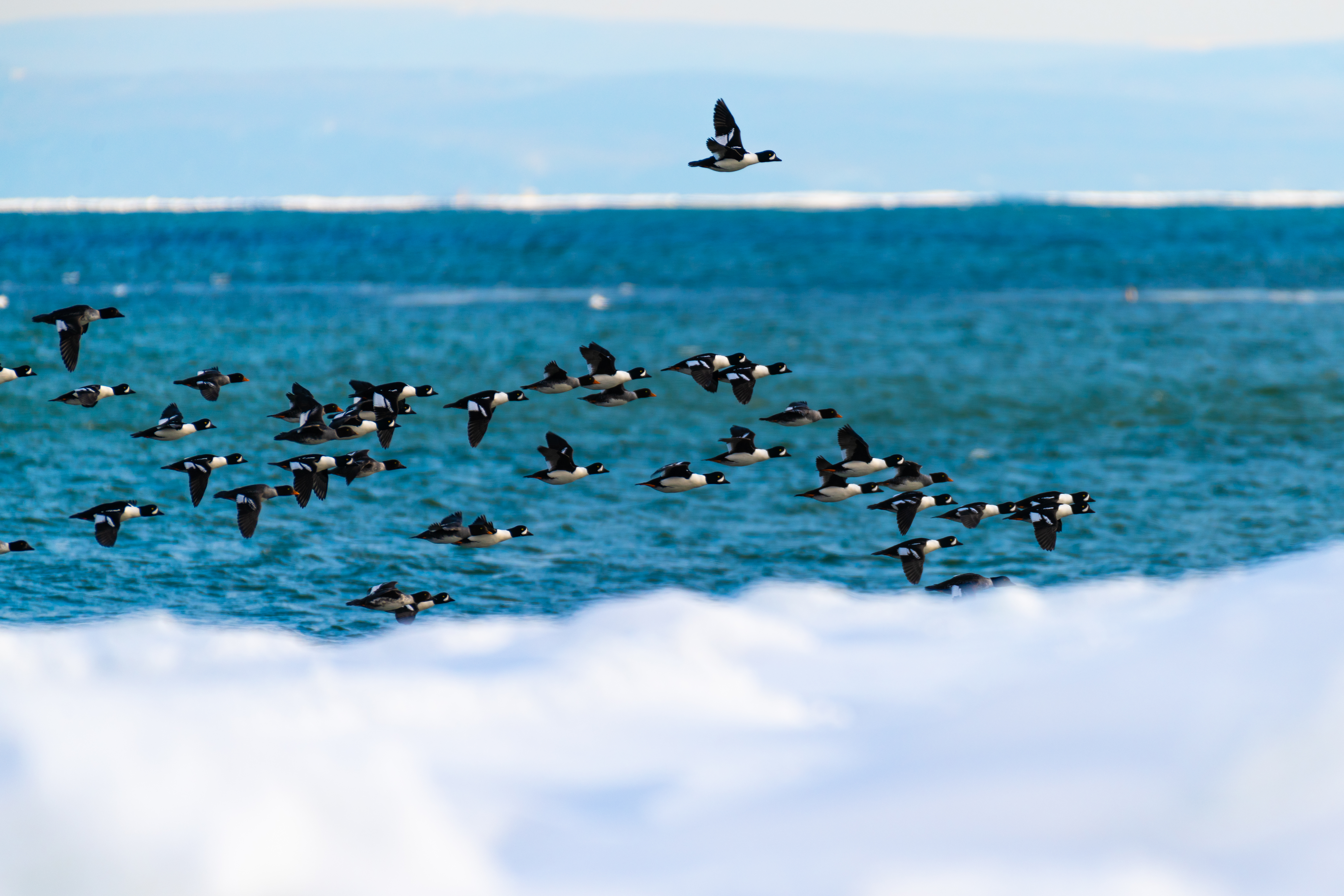After several days of waiting in early June, a window of favourable weather finally arrived on June 18. And so I headed to the tip of the Gaspé Peninsula. A team of scientists from the Mingan Island Cetacean Study (MICS) and the University of St. Andrews’ Sea Mammals Research Unit (SMRU) had already been there for a few days for field work as part of their research.
Together with them, I decided to cover the area between Pointe St-Pierre and Leader Bank off of Cap d’Espoir. After spotting from shore several large spouts off of Île Plate, I launch my boat in Saint-Georges-de-Malbaie.
Three beautiful days at sea during which I photo-ID’d no fewer than twenty fin whales, five humpbacks and observed several dozen minke whales.
These animals were feeding close to the coast in a band no more than three nautical miles wide. They seemed to be finding a lot of food there. Murres, razorbills and guillemots were gorging themselves on sand lances and gannets were diving all around. Fin whales were swimming in groups of two to seven individuals and hunting their prey in a synchronized fashion and at high speed. Impressive! Nicknamed greyhounds of the seas, and for good reason, a speed of at least eight knots (15 km/h) is necessary to keep up with them. When they resurfaced after their dives, still synchronized, they turned 180°, took five or six breaths and dove again to what seemed to be a good concentration of fish.
It’s no easy task to photo-ID in these conditions, as we have to photograph the chevron on the right side of the shoulder. I recognized F593, a.k.a. “Trou”, whom I had already encountered in the Estuary in 2014. She is easily recognized by the large scar on her left shoulder.
The photo-ID’d humpbacks are Irisept, Leprechaun, one individual that remains to be matched, and two young I had encountered last year in the Gaspé area, including the 2015 calf of the old Splish.
This time of the year, lobster fishing is in full swing and schools of fish are found near the coast. Whales hunt their prey through a maze of lobster traps and buoys with all the dangers of entanglement that come with it. We were even able to observe large fin whales feeding feverishly between Pointe St-Pierre and Île Plate, where there is a large concentration of lobster traps. Unfortunately, my fear became a reality when MICS researchers observed the young humpback that I had photographed a few days earlier, with cut marks in its dorsal fin and peduncle from the chafing of a rope. A dangerous co-existence indeed.
A few photos:
[metaslider id=19865]
René Roy is an amateur cetologist who is passionate about the sea and whales; he resides in Pointe-au-Père, in the Bas-Saint-Laurent region. For the past few years, he has undertaken photo-identification expeditions for the Mingan Island Cetacean Study (MICS), mainly in the Gaspé. He also volunteers for the Quebec Marine Mammal Emergency Response Network.





